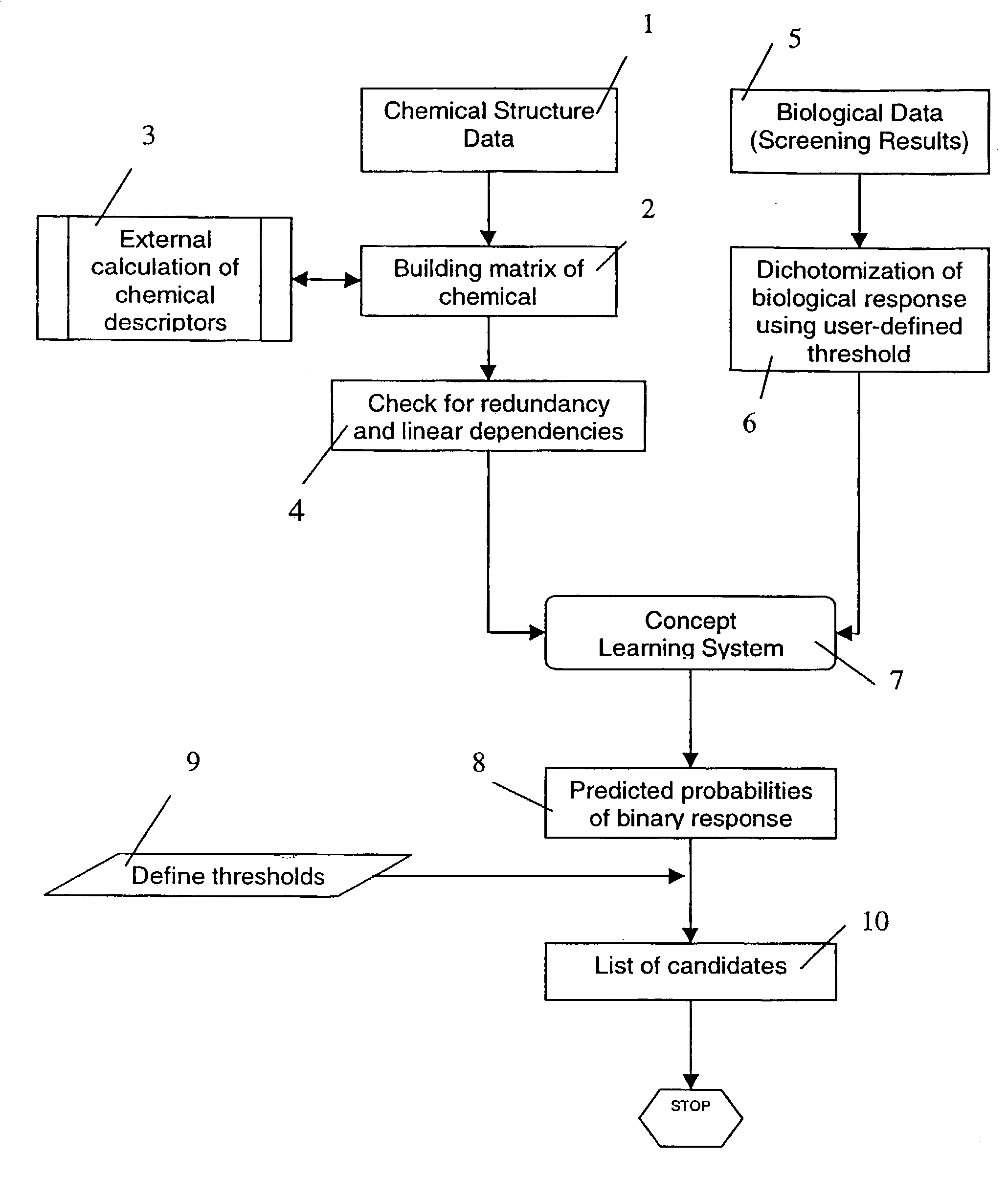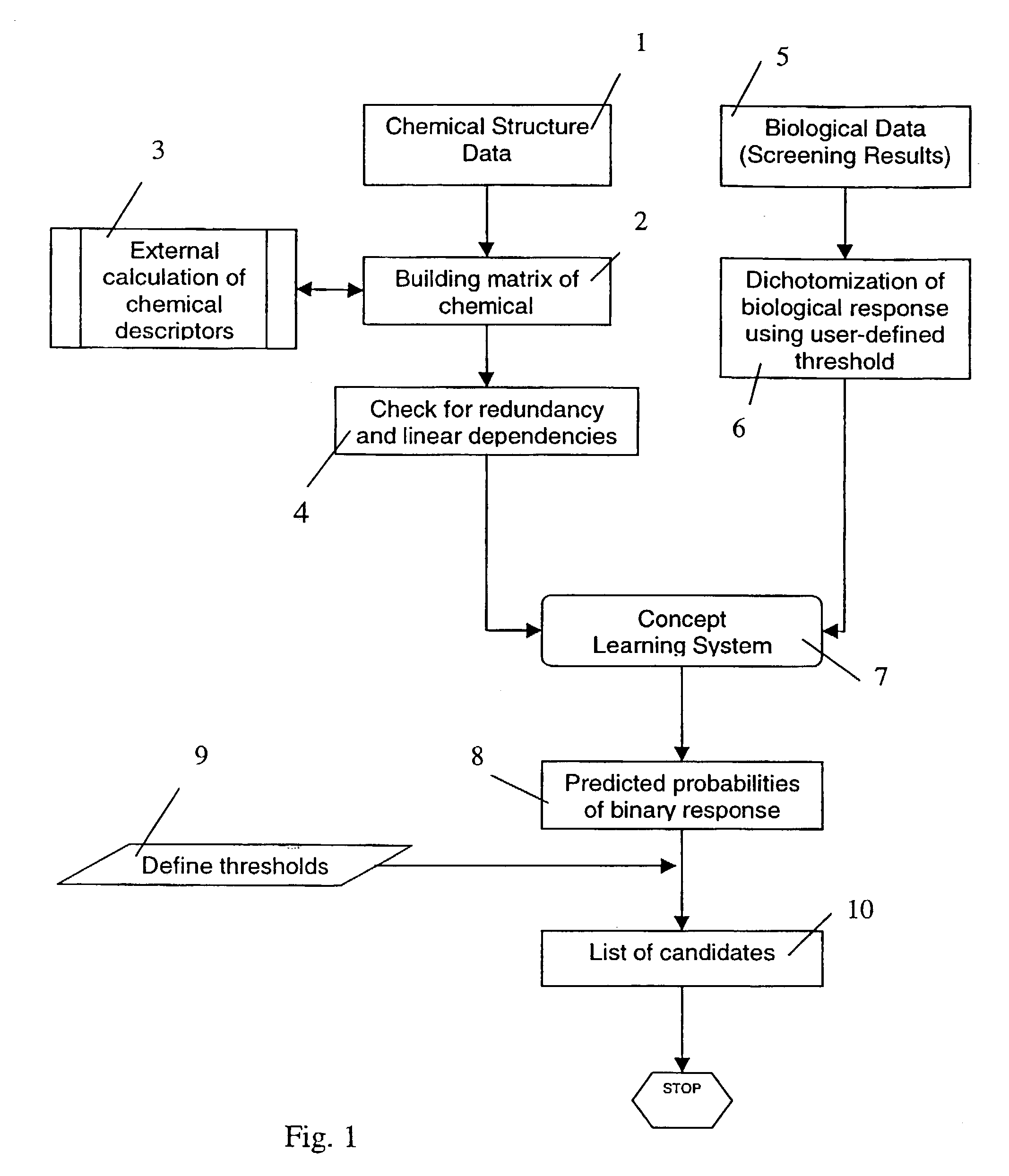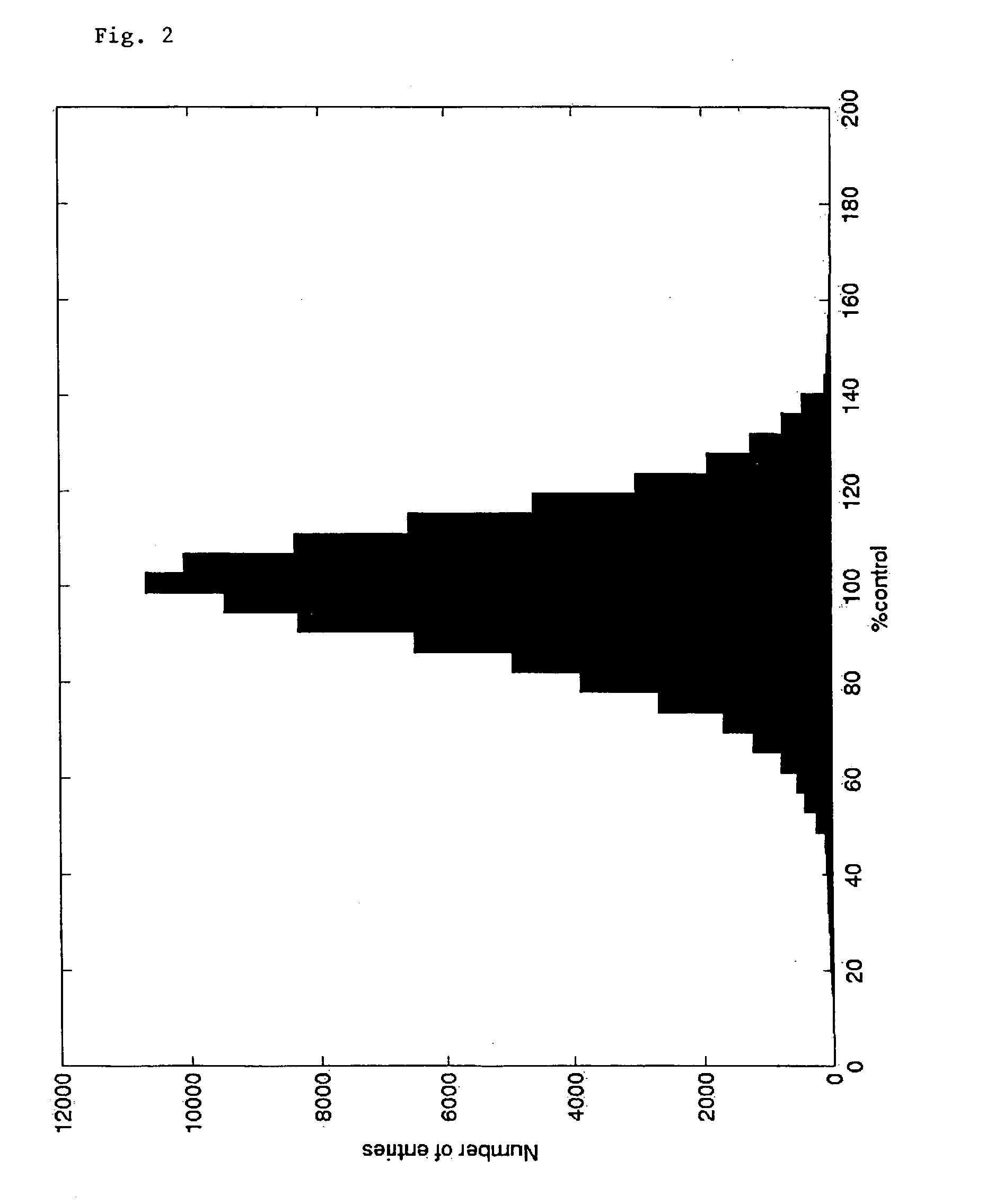Method and apparatus for detecting outliers in biological/parmaceutical screening experiments
a screening experiment and biological/parmaceutical technology, applied in chemical methods analysis, instruments, material analysis, etc., can solve the problems of unrealistic proposals, human operators are not able to check whether a reagent was dispensed into all the wells of the microtiter plate, and the option is often not open to hts experiments
- Summary
- Abstract
- Description
- Claims
- Application Information
AI Technical Summary
Problems solved by technology
Method used
Image
Examples
example 1
[0114] The first example relates to the use of logistic regression analysis in conjunction with MACCS keys for the detection of false negatives in the results of a typical HTS experiment.
[0115] A tyrosine kinase screen was used to illustrate the effectiveness of the invention in detecting false-negative compounds. Within the screening experiment, 89,539 compounds were tested for their kinase inhibiting activity. The screen used the scintillation proximity technology on 96 well microtiter plates, the well concentration of the test compounds was uniformly 10-5 M. The biological potency of a test compound in the screen was expressed as a percentage of the control value. The concentration of the test compound is represented by the value zero. 100% control refers to an inactive potency state, 0% control means the compound is active. No replicate measurements were taken.
[0116] FIG. 2 shows a histogram of the distribution of measured potency in the example screen. The mean of the distribut...
example 2
[0120] The second example relates to the use of a neural network in conjunction with atom types as descriptors for the detection of false negatives in a second HTS experiment.
[0121] In this second assay, 98138 R-compounds were tested for their inhibitory activity on another protein target. The concentration of the test compounds was 10.sup.-5 M in the bioassay. FIG. 7 shows the distribution of the percent effect versus control values in this assay. The top 1% most active compounds were considered as active, all remaining compounds as inactive. The compounds in the data set were characterized by 72 atom types recently introduced by Wildman & Crippen. (WILDMAN, S. A. and Crippen, G. M. "Prediction of physicochemical parameters by atomic contribution" J. Chem. Inf. Comput. Sci. 1999, 39, 868-873). In contrast to the MACCS keys, the occurrence of a particular atom type is counted instead of indicating its presence or absence.
[0122] A linear seperation network, a specific type of artific...
PUM
| Property | Measurement | Unit |
|---|---|---|
| quantitative structure-activity relationship | aaaaa | aaaaa |
| structure-activity relationship | aaaaa | aaaaa |
| physicochemical property | aaaaa | aaaaa |
Abstract
Description
Claims
Application Information
 Login to View More
Login to View More - R&D
- Intellectual Property
- Life Sciences
- Materials
- Tech Scout
- Unparalleled Data Quality
- Higher Quality Content
- 60% Fewer Hallucinations
Browse by: Latest US Patents, China's latest patents, Technical Efficacy Thesaurus, Application Domain, Technology Topic, Popular Technical Reports.
© 2025 PatSnap. All rights reserved.Legal|Privacy policy|Modern Slavery Act Transparency Statement|Sitemap|About US| Contact US: help@patsnap.com



